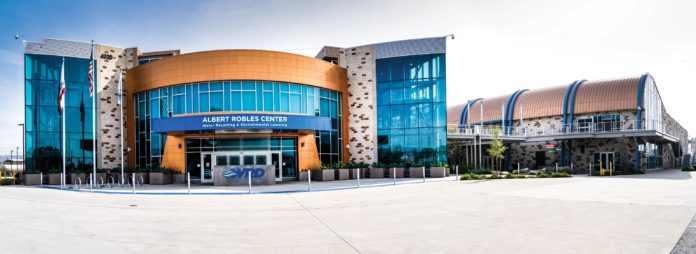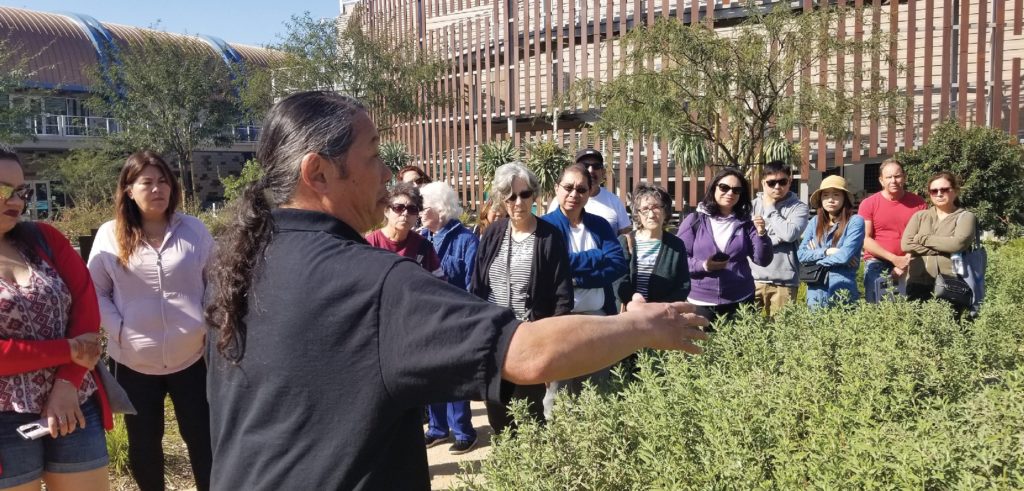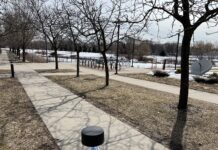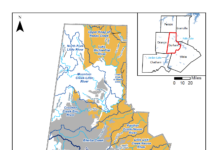
The blank slate of a new project can offer invaluable opportunities for innovative design and construction methods. The design and construction of the Water Replenishment District’s (WRD) Albert Robles Center for Water Recycling and Environmental Learning (ARC) (Figure 1) offered one such opportunity with regards to green infrastructure and stormwater management in particular. However, WRD has further maximized the reach of this green infrastructure by using it to demonstrate the benefits of low impact development to the public through the site’s educational features.
WRD is the largest groundwater agency in the State of California, managing and protecting local groundwater resources for four million residents in southern Los Angeles County, the most populated county in the United States. This semi-arid region receives an average of only 14 inches (355 mm) of rainfall per year, therefore stormwater capture and infiltration are important goals for the highly urbanized and developed region. Keeping stormwater out of the storm drain system, which empties directly into the Pacific Ocean, helps increase local soil moisture and prevents the accumulation of stormwater pollutants which contaminate ocean water.
The Project
The ARC was constructed in 2019 in Pico Rivera, California with the primary purpose of producing 14 million gallons (53,000 cubic meters) of highly-purified recycled water per day for delivery to local spreading grounds for groundwater replenishment and has the esteemed secondary purpose of educating the public and stakeholders about the importance of groundwater, recycled water, stormwater and water conservation.
By making ecologically inspired design choices, WRD had enough green infrastructure and low impact development components to be awarded the United States Green Building Council’s Leadership in Energy and Environmental Design (LEED™) Platinum Certification in 2020. The LEED Platinum accreditation is a distinction that only 5.7% of buildings in the United States. The on-site integrated stormwater management system played a large role in achieving the certification.
ARC’s Integrated Stormwater Management System
The overall stormwater design at ARC was completed in adherence to the requirements of the California Regional Water Quality Control Board Los Angeles Region MS4 Permit and the Los Angeles County Department of Public Work’s (LACDPW) Low Impact Development (LID) Standards Manual. Specifically, the project was designed to retain and infiltrate the storm runoff volume from a 24-hour, 85th percentile storm event which is calculated to 0.95 inches (24.13 mm) and 11,200 cubic feet (317 cubic meters) of rainwater.
An integrated stormwater management system was installed to maximize onsite infiltration and on-/off-site groundwater recharge while also preventing pollutant loading off site. Components of this system include the following:
- Pervious pavement – The 130-stall parking lot consists of pervious concrete and pavers to control runoff and promote stormwater infiltration (Figure 2).
- Bioretention basins – Five bioretention basins installed around the site’s perimeter receive first storm flush flows and provide on-site flow retainment and infiltration.
- Underground treatment and infiltration system – The most significant aspect of the LID design is an underground treatment and infiltration system. Stormwater directed toward the system is filtered through a hydrodynamic separator that uses swirl concentration and continuous deflective separation to screen, separate and trap trash, debris, sediment and hydrocarbons from stormwater runoff. Once filtered, the water is detained and infiltrated through three underground, 96-inch (244 cm) diameter, 36-foot (11 m) long corrugated, perforated and interconnected pipes. This system is designed to capture and retain approximately 8,800 cubic feet (249 cubic meters) of runoff, exceeding the Storm Water Quality Design Volume (SWQDv) generated by an 85th percentile storm event.
- Green roof – WRD constructed a rooftop garden atop the Learning Center to capture and harvest rainfall (see cover). Excess roof runoff discharges to ground floor planters in front of the building. All landscaping on site consists of drought-tolerant or native plants and is irrigated with a low-flow drip system, thus further reducing stormwater runoff and potential pollutant discharges.

Project Challenges
The ARC site layout posed the biggest challenge to the stormwater design. Prior to the construction of ARC, runoff from the property was collected in swales and flowed into an inlet of the adjacent San Gabriel River. Because of the site’s proximity to nearby water bodies, it was important to minimize off-site pollutant loading and stormwater runoff from the site. It was determined that a combination of permeable pavement, bioretention basins and an underground stormwater treatment and infiltration system would manage all stormwater flows on site.
Furthermore, the project took a design-build approach. This helped to create an environment where all parties, including the project owner and manager, the general contractor, the design engineer of record and plant operators, were able to continuously collaborate throughout the design and construction of the facility. This resulted in an innovative facility that achieved all project goals. ARC has already seen two rain seasons and the stormwater capture features are working as designed.

Seeing is Believing
All aspects of the green infrastructure at ARC are incorporated into the numerous educational features on site. There are over 30 water-related exhibits in the Learning Center and an outdoor Demonstration Gardens containing 10 interpretive signs (Figure 2), drought-tolerant plants and a working model of the San Gabriel River and spreading grounds.
Understanding that “seeing is believing,” visitors can learn about stormwater capture, treatment and infiltration by seeing firsthand what these processes look like. Through on-site classes and tours, visitors are exposed to the sustainable features while reading interpretive signs and listening to a docent or instructor.
WRD hosts Eco Gardener classes on site where attendees tour the gardens and learn how to install a bioretention basin, drip irrigation and California native plants (Figure 3). Furthermore, docent-led LEED tours make stops at the pervious pavement, bioretention basins and green roof.
While ARC’s integrated stormwater management system has been critical in capturing, treating and infiltrating the site’s rainwater, the green infrastructure investments have also paid off handsomely for public education purposes. WRD hopes to inspire future environmental stewards and innovative green buildings by leading through example.
About the Expert
Phuong L. Watson, PE, is a senior engineer at the Water Replenishment District of Southern California. She has over 20 years of experience working on projects related to groundwater quality, recycled water reuse and regulatory compliance. She is a registered professional engineer in the State of California and earned a bachelor’s degree in biology from the University of Southern California and a master’s degree in environmental engineering from California State Polytechnic University, Pomona.











